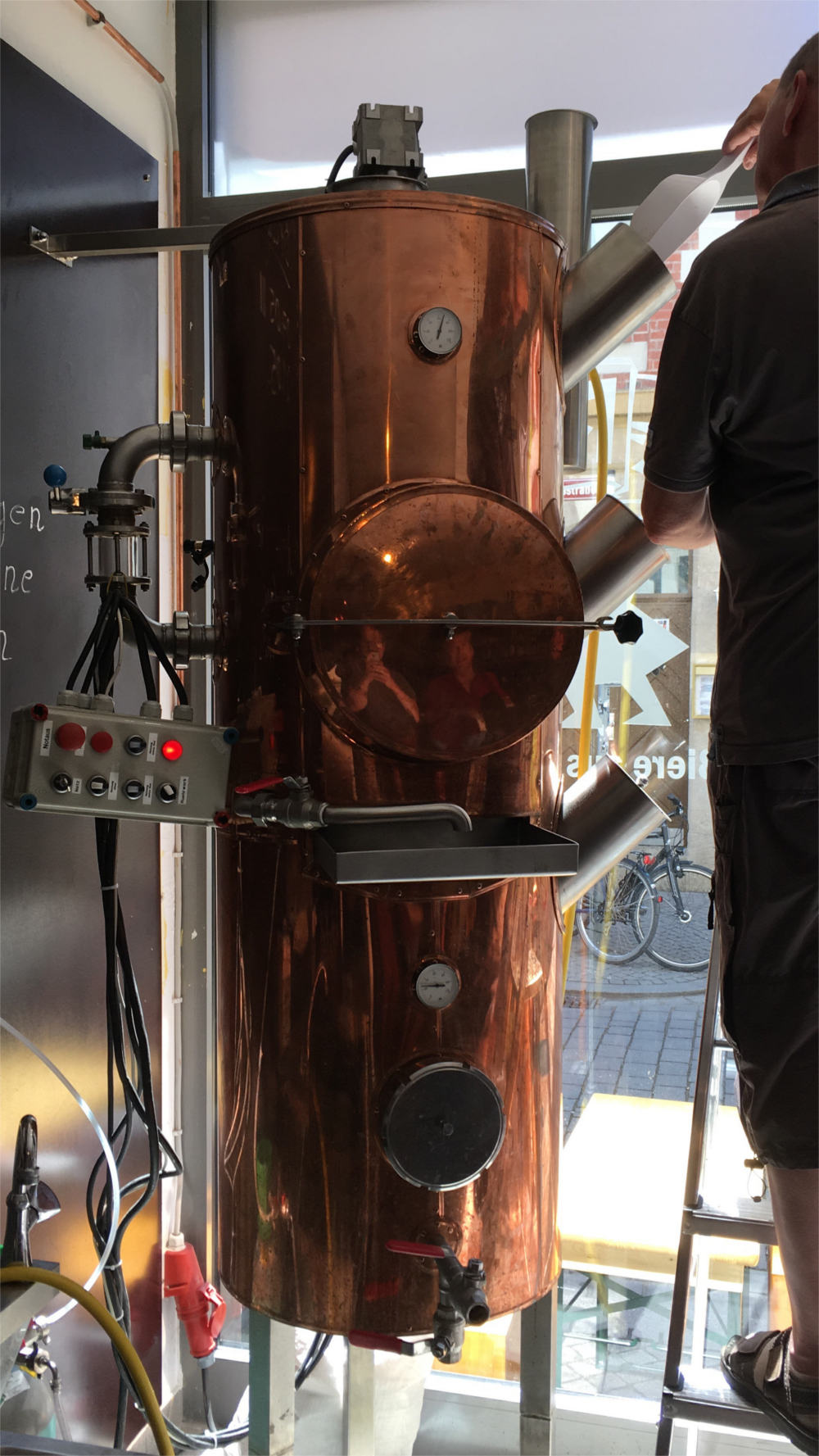Brewing Course at Der Bierrufer

On a warm Sunday afternoon, I found myself at an awesome, 6-month-old microbrewery in Erfurt that also touts the sale of over 250 quality beers from around the world. However, what keeps me coming back is their house-brews – only one tap with a rotating handle. And there’s also the view…
Sten, the proprietor, welcomed the three participants and announced the goal of brewing approximately 60 liters of a Guinness Porter. We were to use his three-story, copper brewing vessel over the next five hours: progressing from weighing the grain, grinding the malt, mashing and producing the final wort.
His system has a top-level Mash Tun (tr., Maischepfanne), which will stir the milled malt while triggering the enzymes that break down the starch into sugars. It was in this Mash Tun that 9 kg of Munich Malt, 1 kg of Amber Malt, 750 g of Roast Malt, and 200 g of Acid Malt was heated in a slurry for 75 minutes at 68°C. The temperature allowed us to trigger more alpha amylase (tr., Amalyse), which will favor fermentable sugars over flavor sugars (i.e., more alcohol potential).
In my experience, mashing for an hour or two is generally sufficient to ensure the amylase process is adequate and complete. And while I have read about iodine tests (tr., Jodtest), I have never seen one performed. As part of the class, we added a bit of iodine to the mash at different stages; once the iodine no longer turned violet, conversion was complete, and we were able to move on to lautering and boiling.
After passing the iodine test, the complete slurry of mash was passed to the second-level via the pipe seen on the left of the tank. This second level is the Lauter Tun (tr., Läuterbottich). After allowing a grain bed to settle out over the course of 30 minutes, it is here that the liquid will be drained into the bottom tank to be boiled (transitioning from mash to wort). Also, additional sparge water (tr., Anschwänzen) is sprinkled over the grains to extract as much sugar as possible for the boil. One can see the sprinkler device inside this level.
Know that the spent grain (tr., Treber) can be used as compost, as livestock feed, or in a delicious bread recipe.
The last part of this brew day was the boil. Once a roiling boil was achieved, we pitched 100 g of Spalt hop pellets into the wort and allowed the wort to boil for two hours. When complete, the wort would be cooled overnight. Sten mentioned that he would also create a yeast starter later in the evening so that the yeast will be quite active when pitched into the final fermentation vessel the next day – again, something I have read about but had never considered its importance for large batches. (My former small batches did not require so much yeast care.)
It is also during the transfer of the cooled wort to the final fermentation vessel where the sugar content is measured. I am accustomed to using a hydrometer (tr., Spindel) in order to take original and final gravities. However, I was introduced to the use of a refractometer, which only takes initial content readings as it requires arithmetic conversions when alcohol is present in the solution; this initial reading is in degrees Plato, one of the many ways to measure sugar and, hence, potential alcohol.
After five to seven days in the fermentation vessel, the green beer would be transferred to a keg and be lagered for an additional two weeks before consumption… presumably by me.
For a full list of translated brewing terms, please visit this page.







